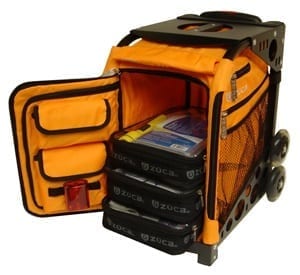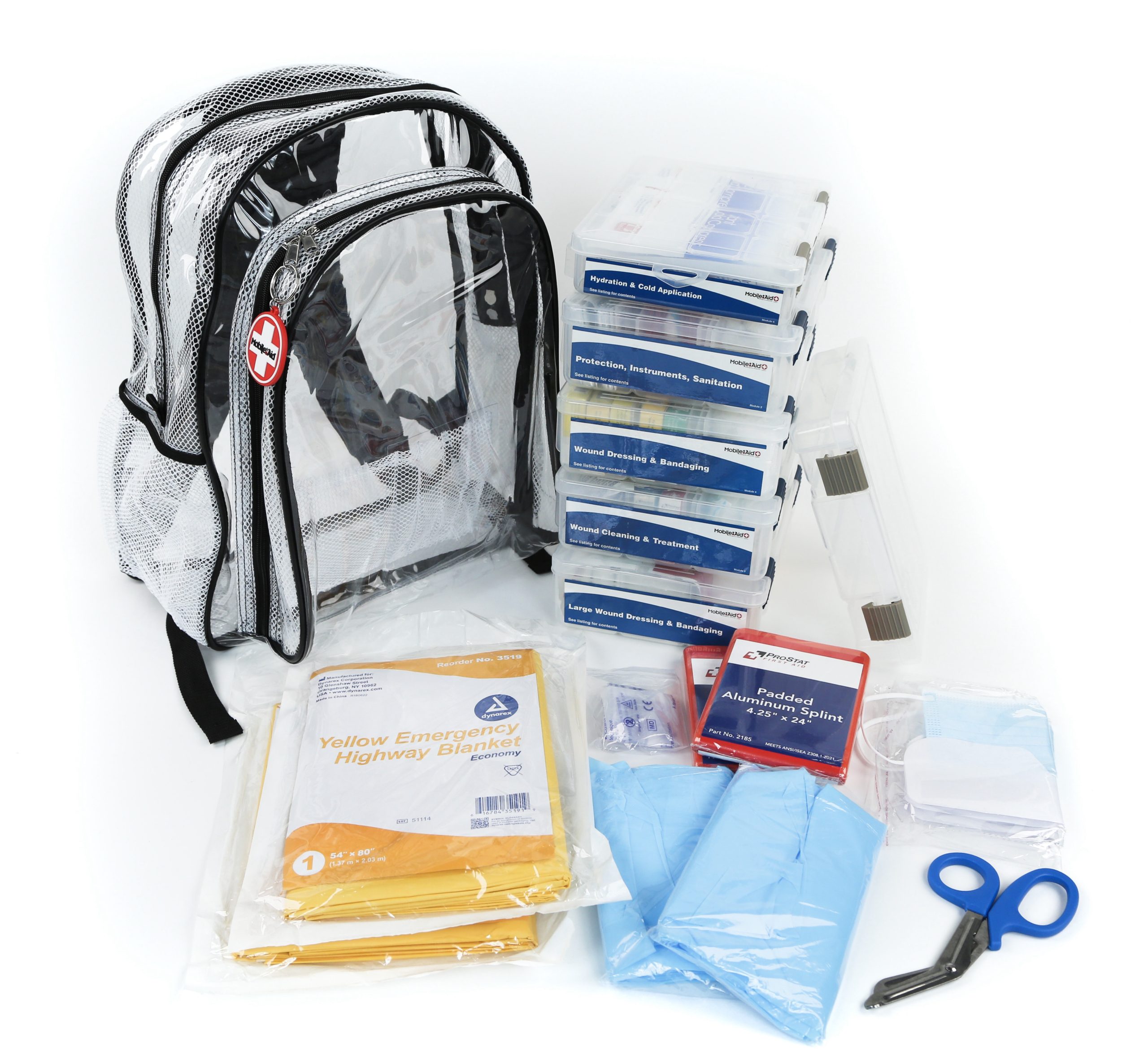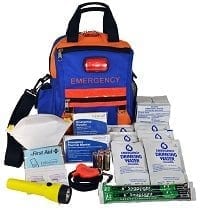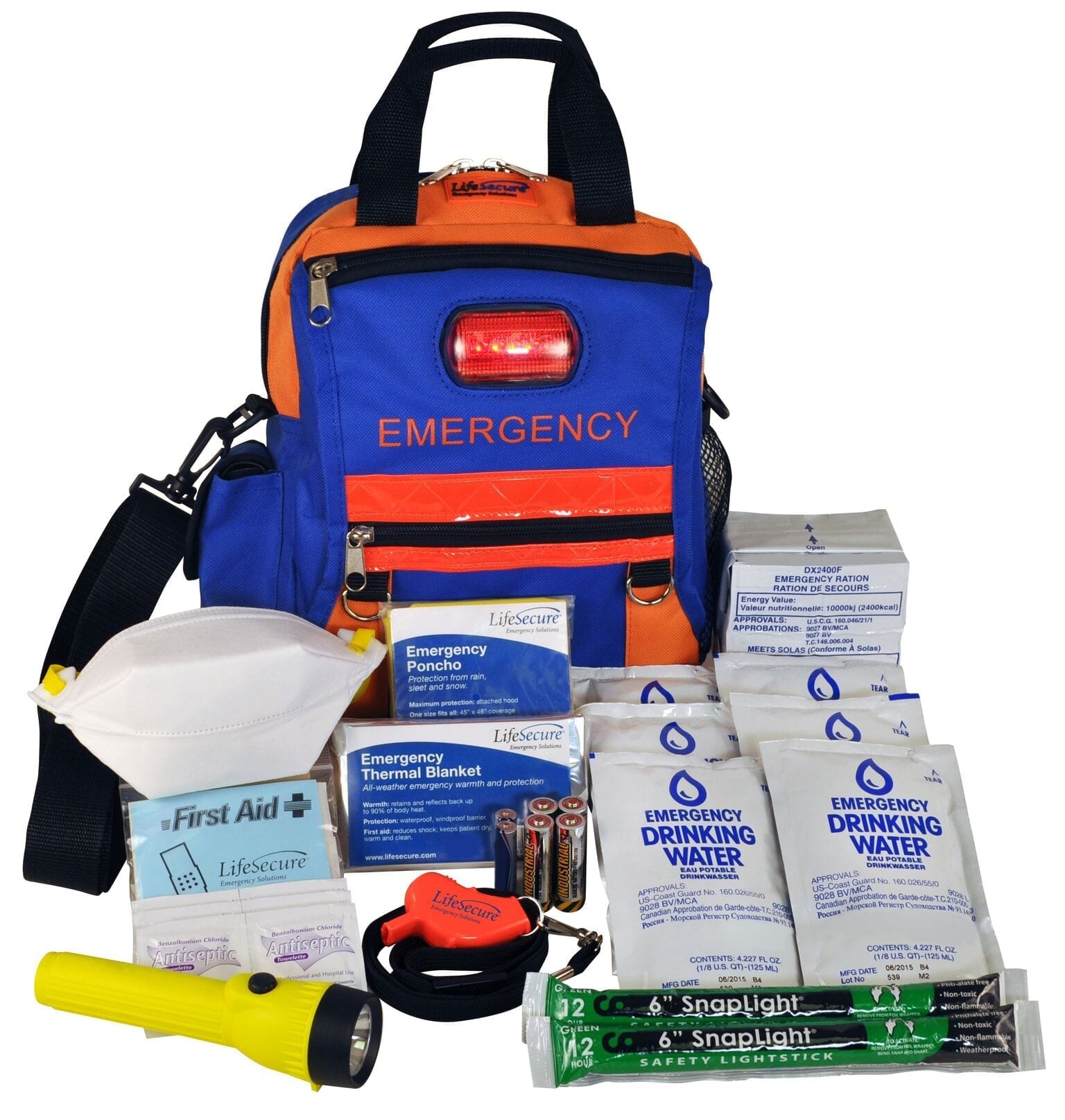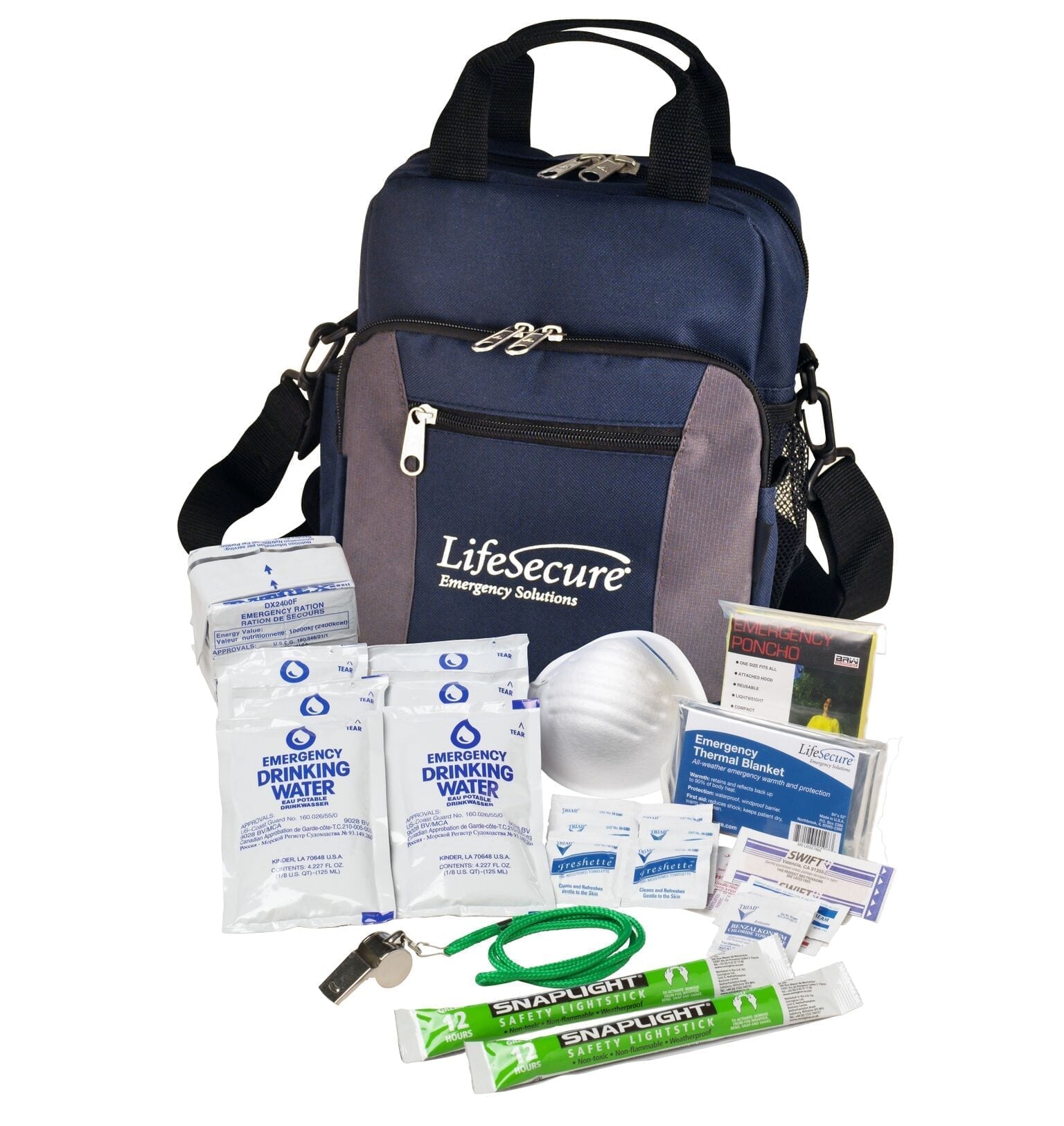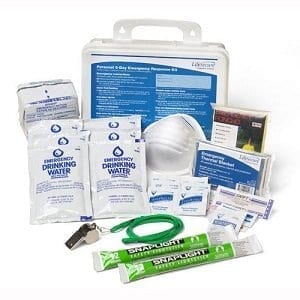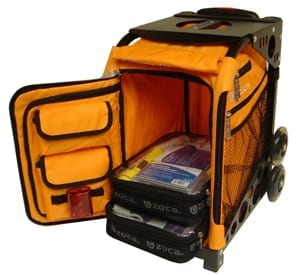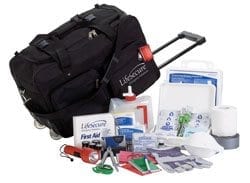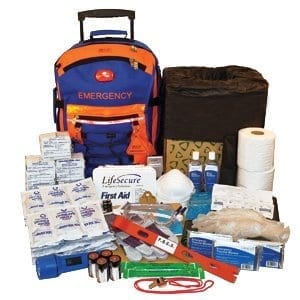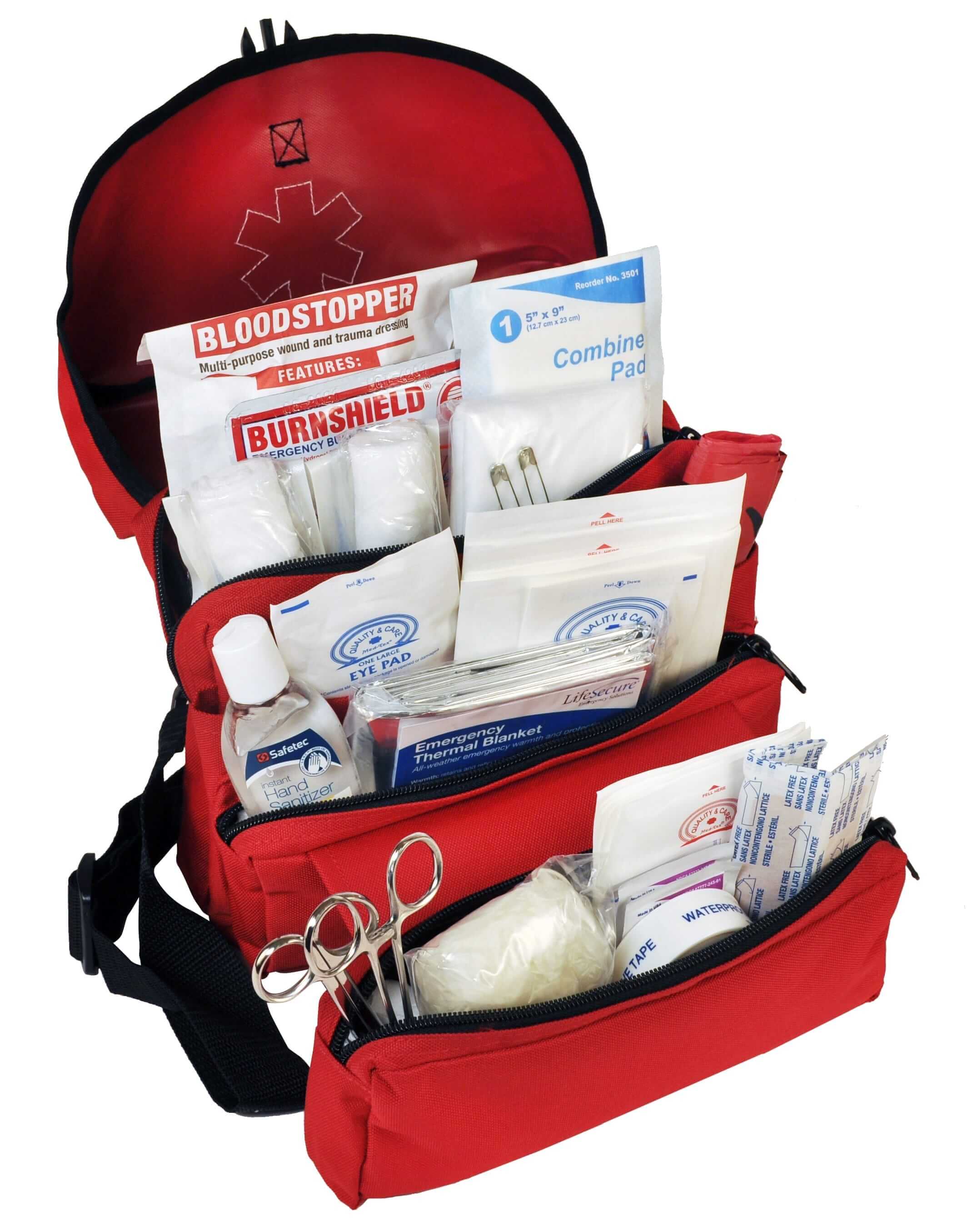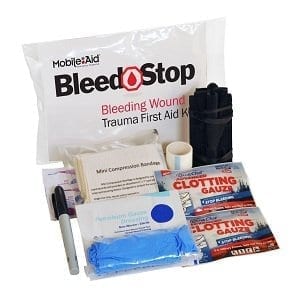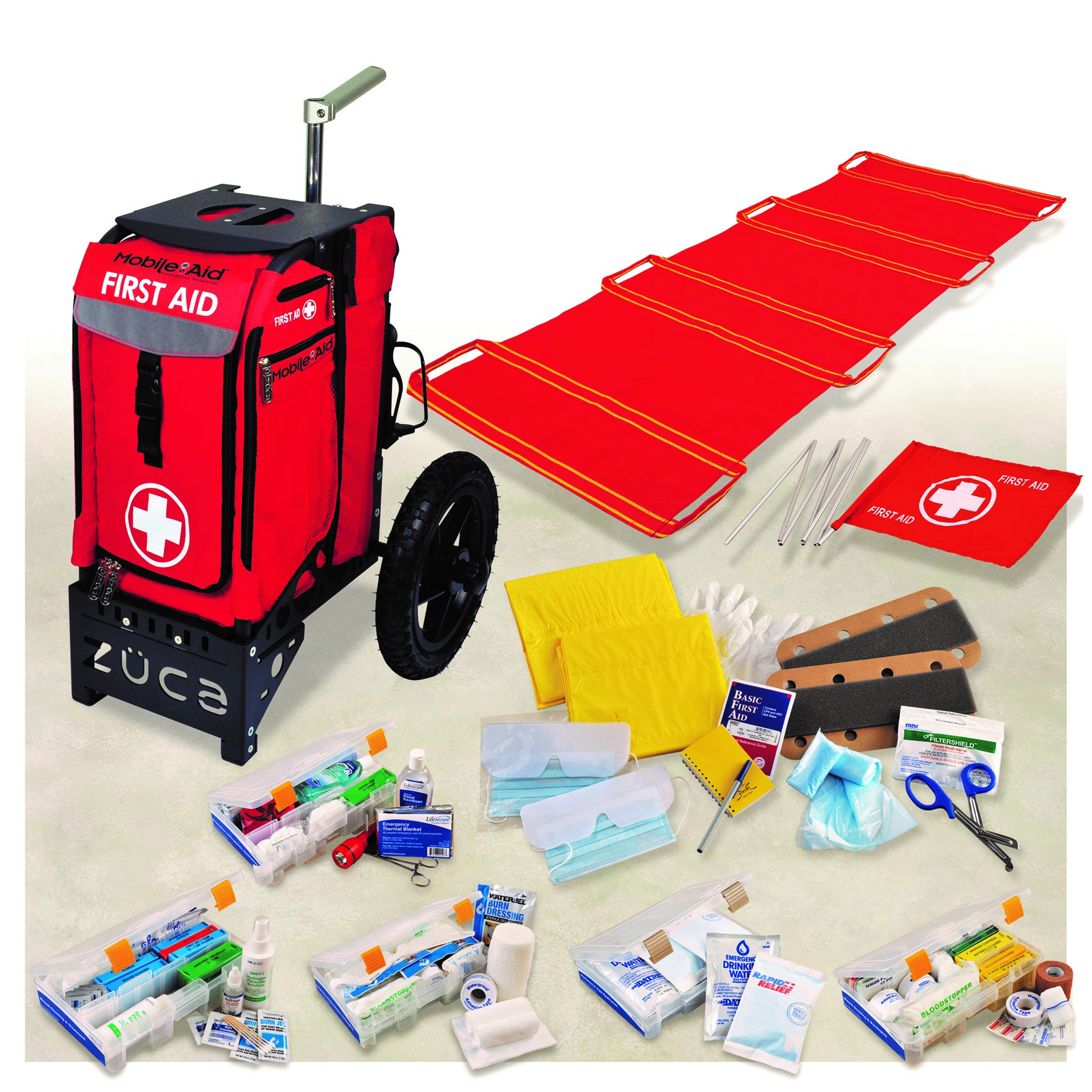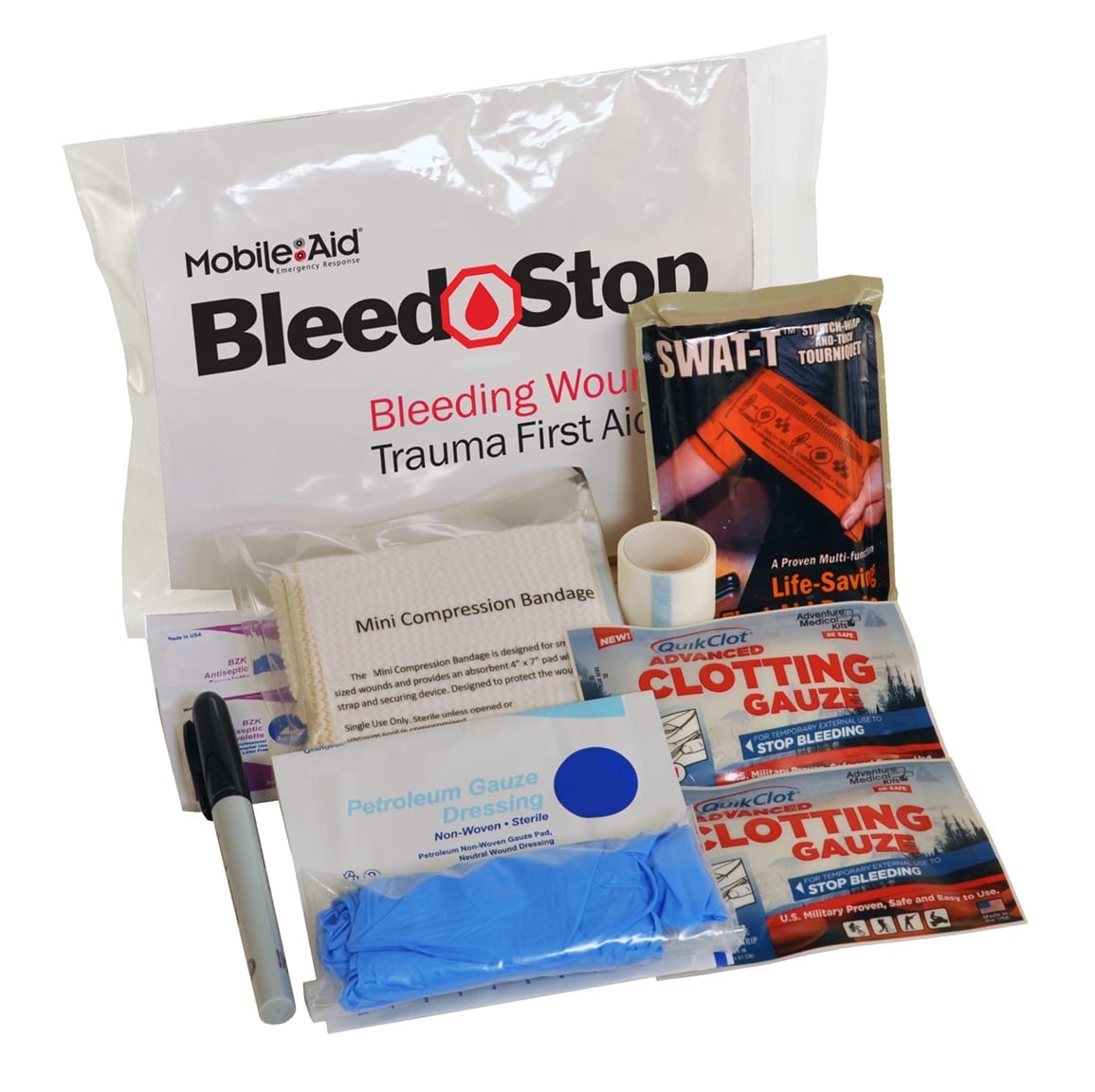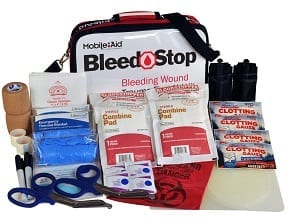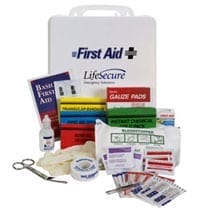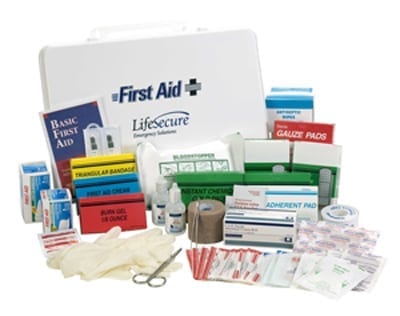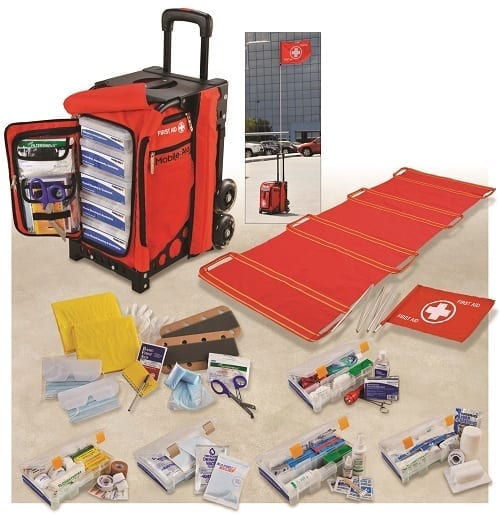Emergency kits for homes are designed to prepare both families and single people who live in places where disasters could strike. Whether it is a natural disaster or any other emergency, it is important that homes are prepared for injuries that could occur and be ready to stay in place for a long period of time- possibly without power. Outside help may not arrive for up to three days or more. Every family should have a home emergency kit, which can provide supplies that last at least 72 hours (3 days) in case of the need to evacuate or shelter in place. This is the best way to ensure your family will be secure. Not only do they include survival supplies such as food, water, and light and communication tools, but emergency kits for homes also have first aid supplies in case someone is injured. Keep your family safe and secure with a home emergency kit.
Home Emergency Kits
What is included in an emergency kit?
Emergency kits vary by how many people they are for, by how many hours/days they need to last, and sometimes by how far they need travel. Because different emergencies may call for you to either evacuate or shelter-in-place, it is best to prepare with a kit that can be easily transported for when necessary. Be sure you have the minimum supply to meet the following 10 needs: food, water, first aid, breathing protection, shelter, warmth, communication, light, tools, sanitation & hygiene. Once you have included those required supplies, add additional items or quantities of supplies if there is still room in your pack or cart.
What is the best emergency food?
The best emergency food is food that meets the following three key requirements:
1. Long shelf life. The food selected should have a long shelf life so that it does not spoil quickly. Include food items like emergency food bars that last up to 5 years.
2. Ready-to-eat. It is important that your food selection be Ready-to-eat because you may not have the opportunity to cook in the immediate aftermath of an emergency.
3. Light weight and compact. Your selected foods should also be lightweight and compact, so they can be easily carried in in a backpack, bag, or cart
Tip: Datrex, emergency food rations with a 5-year shelf life, is an excellent choice for emergency food. They come in rationed ready-to-eat portions and are compact and lightweight.
What should you put in your emergency kit?
Your emergency kit should provide immediate survival needs after any anticipated emergency or disaster. It is best to consider how to meet your minimum needs in the following 10 basic survival categories before adding extra items to your kit: food, water, first aid, breathing protection, shelter, warmth, communication, light, tools, sanitation & hygiene. The additional items you add should be compact and lightweight and have a long shelf life. Be sure to include some cash and personal items, such as vital medications, spare glasses or contacts, and vital information like phone numbers of friends and family members.
Where do you keep your emergency kit?
Store your emergency kit where it can be kept cool and dry, yet easy to access in a moment’s notice. Depending on your climate and the layout of your home, you may consider storing your emergency kit by the back door, in a front closet, or even in the garage. Be careful not to store all of your emergency supplies a difficult to reach place, like a basement, because you need to access it quickly. However, a more isolated location can be a good place to store longer term shelter-in-place supplies.
Emergency Supplies
Personal Emergency Kits
-
SECUR-Evac Hi-Visibility/Hi-Safety 3-DAY AUTO Emergency Kit (50800)
$67.95 Add to cart
-
LifeSecure Ride-Along AUTO Emergency Survival Kit (50150)
$49.95 Add to cart
-
SecurEvac Hi-Visibility Mini-Backpack 3-DAY Emergency Kit (80800)
$67.95 Add to cart
-
LifeSecure Plus WeatherTight Hard-Box 3-DAY Survival Kit (41010)
$35.95 Add to cart
-
LifeSecure Compact 3-DAY Emergency Survival Kit (80001)
$34.95 Add to cart
-
LifeSecure WeatherTight Hard-Box Emergency 3-Day Survival Kit (40001)
$31.95 Add to cart
-
Clear-View Personal 3-Day Emergency Survival Pack [Fits in Bug-Out-Roller Carts] (80050)
$64.95 Add to cart
-
Bug-Out-Roller 3-DAY Emergency Evacuation Survival Cart (83100)
$359.95 Add to cart
-
RollEvac Easy-Roll-Or-Carry Rolling Conversion Backpack All-Hazards 3-DAY Emergency Survival Kit (82100)
$139.95 Add to cart
-
Leather-Bottom Backpack All-Hazards 3-DAY Emergency Survival Kit (80100)
$124.95 Add to cart
-
Unrivaled Survival™ Max Hi-Vis Mini-Backpack 3-DAY Disaster Survival Kit (80830)
$194.95 Add to cart
-
SecurEvac [Seen, Safe, Rescued] High-Visibility Mini-Backpack 3-DAY Disaster Survival Kit (81830)
$149.95 Add to cart
-
SecurEvac Plus [Seen, Safe, & Rescued] High-Visibility Mini-Backpack 3-DAY Emergency Kit (81800)
$94.95 Add to cart
-
LifeSecure Plus Compact 3-DAY Emergency Survival Kit (81001)
$79.95 Add to cart
Family Emergency Kits
-
Unrivaled Survival™ Easy-Roll 30-Person Evacuation & Shelter-In-Place Kit with BleedStop Compact 200 Bleeding Control Kit (10865)
$464.90 Add to cart
-
Unrivaled Survival™ Emergency Survival Bug-Out Cart [3- DAY, 4-Person] (83400)
$489.95 Add to cart
-
Unrivaled Survival™ Emergency Survival Bug-Out Cart [2- DAY, 4-Person] (83200)
$424.95 Add to cart
-
[4-Person] RollEvac Easy-Roll-Or-Carry Duffel All-Hazards 3-DAY Emergency Kit (82400)
$189.95 Add to cart
-
[4-Person] LifeSecure Duffel All-Hazards 3-DAY Emergency Kit (80400)
$189.95 Add to cart
-
[2-Person] RollEvac Easy-Roll-Or-Carry Duffel All-Hazards 3-DAY Emergency Kit (82200)
$169.95 Add to cart
-
[2-Person] LifeSecure Duffel All-Hazards 3-DAY Emergency Kit (80200)
$159.95 Add to cart
-
[5 Person-3 Day] SecurEvac Easy-Roll Emergency Kit (10550)
$339.95 Add to cart
-
[5-Person 3-Day] SecurEvac Hi-Visibility Backpack Emergency Kit (10500)
$289.95 Add to cart
Family First Aid Kits
-
MobileAid® Clear-View™ 50-Person Modular Trauma First Aid Backpack Kit (34350)
$329.95 Add to cart
-
MobileAid® Clear-View™ 25-Person Trauma First Aid Backpack Kit (34330)
$118.95 Add to cart
-
MobileAid® BleedStop Bleeding Control Throw Pack (32705)
$67.95 Add to cart
-
MobileAid Essentials ALL-TERRAIN Modular First Aid Cart (33505)
$549.95 Add to cart
-
MobileAid Grab-N-Go Trauma First Aid Field Kit (37320)
$109.95 Add to cart
-
MobileAid 50-PERSON Trauma First Aid Kit (37300)
$269.95 Add to cart
-
MobileAid FLASH-RESPONSE 50-Person Modular Trauma First Aid Kit (31150)
$389.95 Add to cart
-
BleedSTOP IMMEDIATE RESPONSE 200 Bleeding Control & Gunshot Wound Trauma First Aid Kit (32714)
$144.95 Add to cart
-
BleedSTOP COMPACT 200 Bleeding Control & Gunshot Wound Trauma First Aid Kit (32711)
$124.95 Add to cart
-
MobileAid Reflex Hi-Visibility 50-PERSON Modular Trauma First Aid Backpack Kit (31732)
$324.95 Add to cart
-
BleedSTOP IMMEDIATE RESPONSE 100 Bleeding Control & Gunshot Wound Trauma First Aid Kit (32712)
$114.95 Add to cart
-
MobileAid ALL-TERRAIN Indoor/Outdoor Hi-Visibility Modular Trauma First Aid Kit Station Cart (33500)
$699.95 Add to cart
-
Bleed-STOP COMPACT 100 Bleeding Control & Gunshot Wound Trauma First Aid Kit (32710)
$94.95 Add to cart
-
BleedStop DOUBLE 300 Bleeding Control & Gunshot Wound Trauma First Aid Kit [TREATS 2 BLEEDING WOUNDS] (32724)
$297.95 Add to cart
-
BleedStop DOUBLE 200 Bleeding Control & Gunshot Wound Trauma First Aid Kit [TREATS 2 BLEEDING WOUNDS] (32722)
$249.95 Add to cart
-
LifeSecure Small Emergency First Aid Kit (71010)
$9.95 Add to cart
-
LifeSecure Deluxe Emergency First Aid Kit (71000)
$23.95 Add to cart
-
BleedStop DOUBLE 100 Bleeding Control & Gunshot Wound Trauma First Aid Kit [TREATS 2 BLEEDING WOUNDS](32720)
$189.95 Add to cart
-
Lifesecure Large Emergency First Aid Kit (30425)
$59.99 Add to cart
-
Lifesecure Extra Large Emergency First Aid Kit (30450)
$109.99 Add to cart
-
MobileAid OTS (Over-The-Shoulder) On-the-Go First Aid Kit (31764)
$84.95 Add to cart
-
MobileAid Trauma EASY-ROLL Modular First Aid Station (31500)
$599.95 Add to cart

